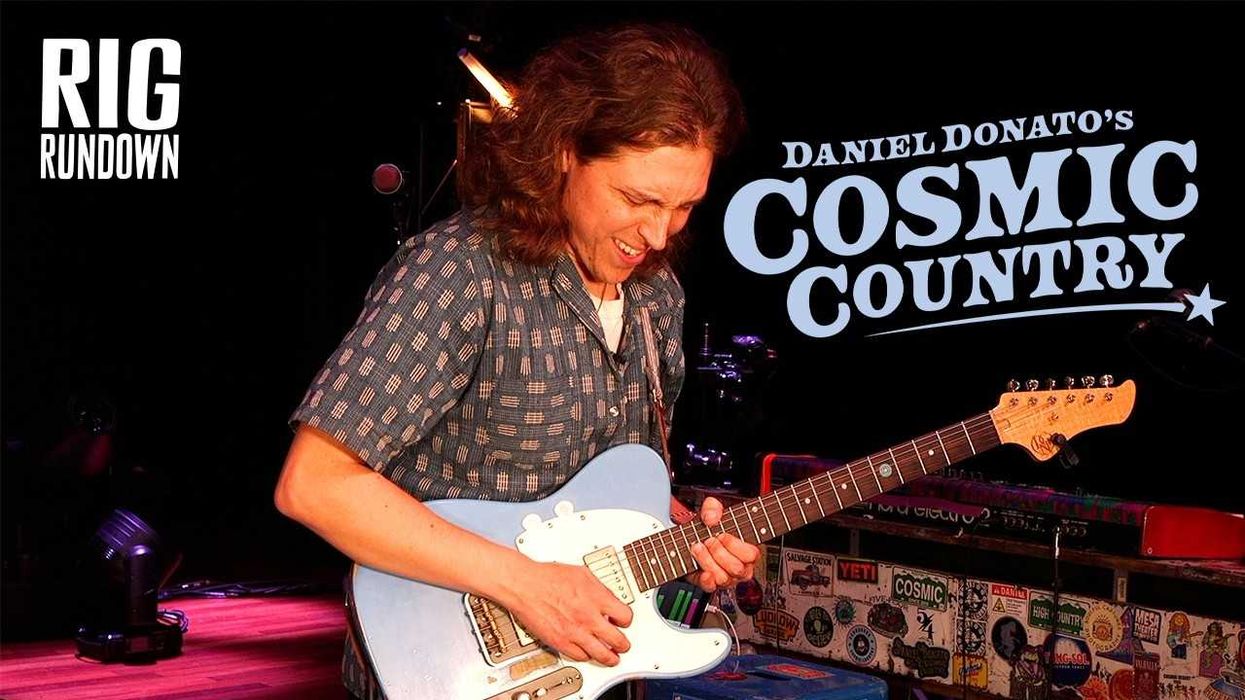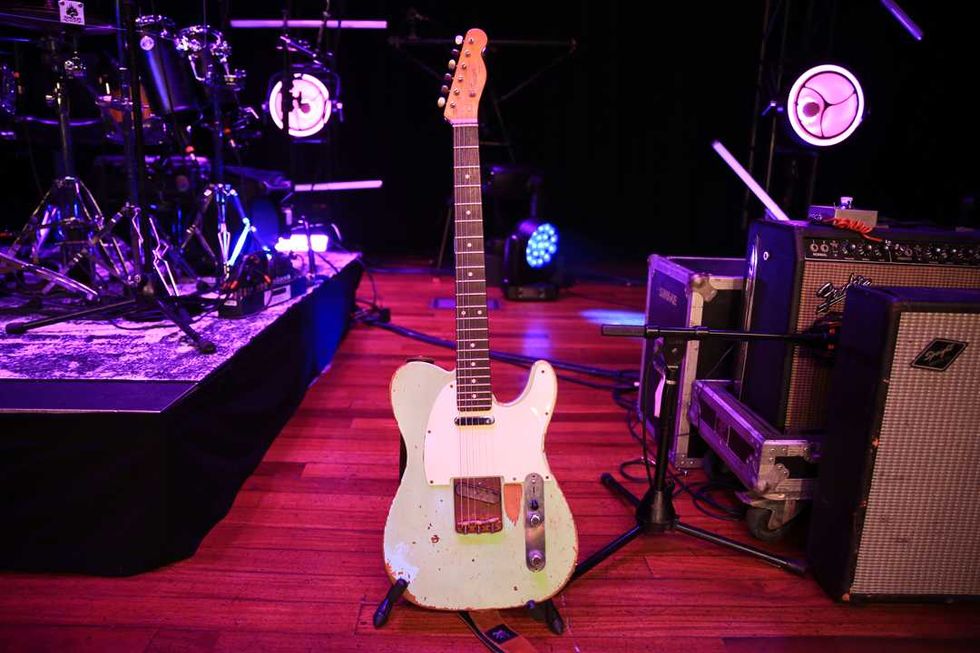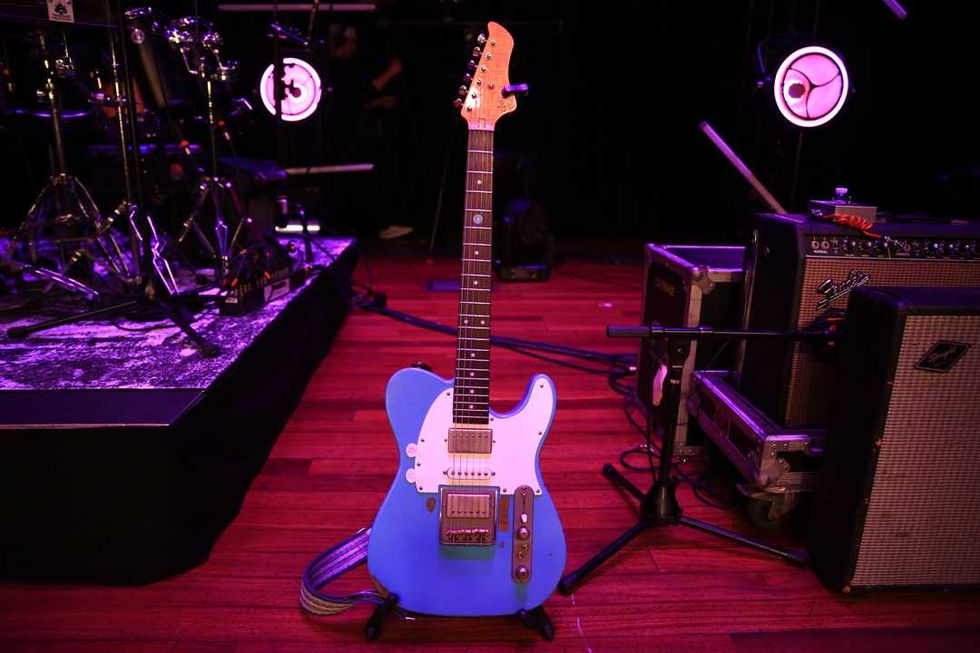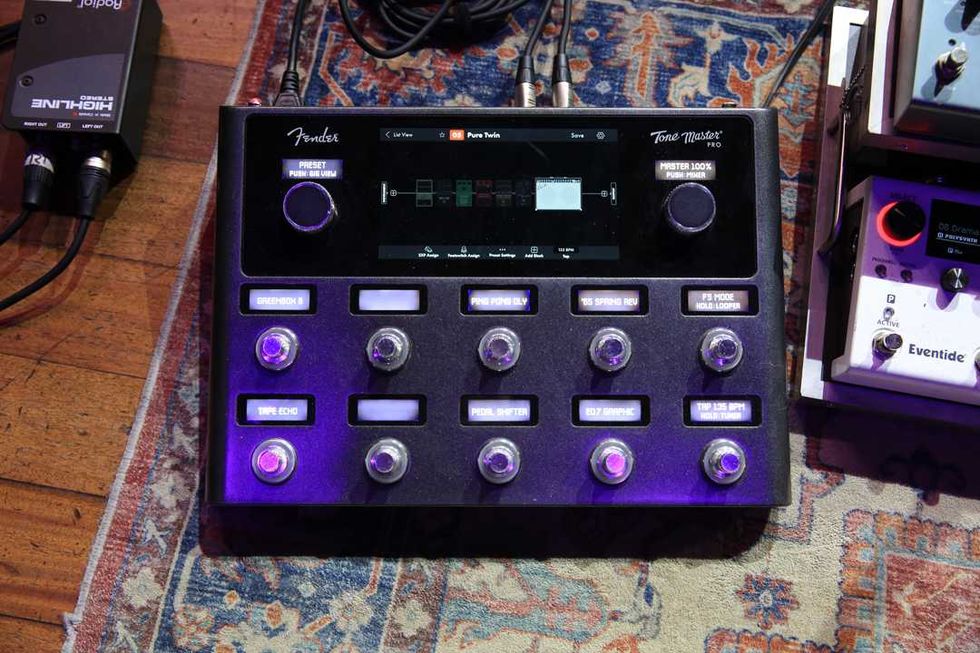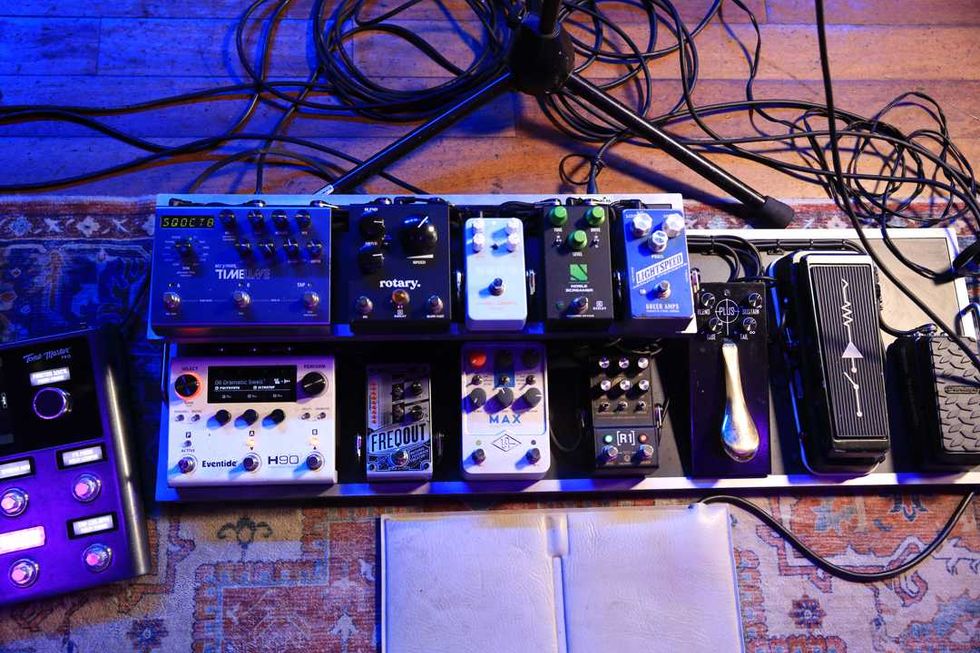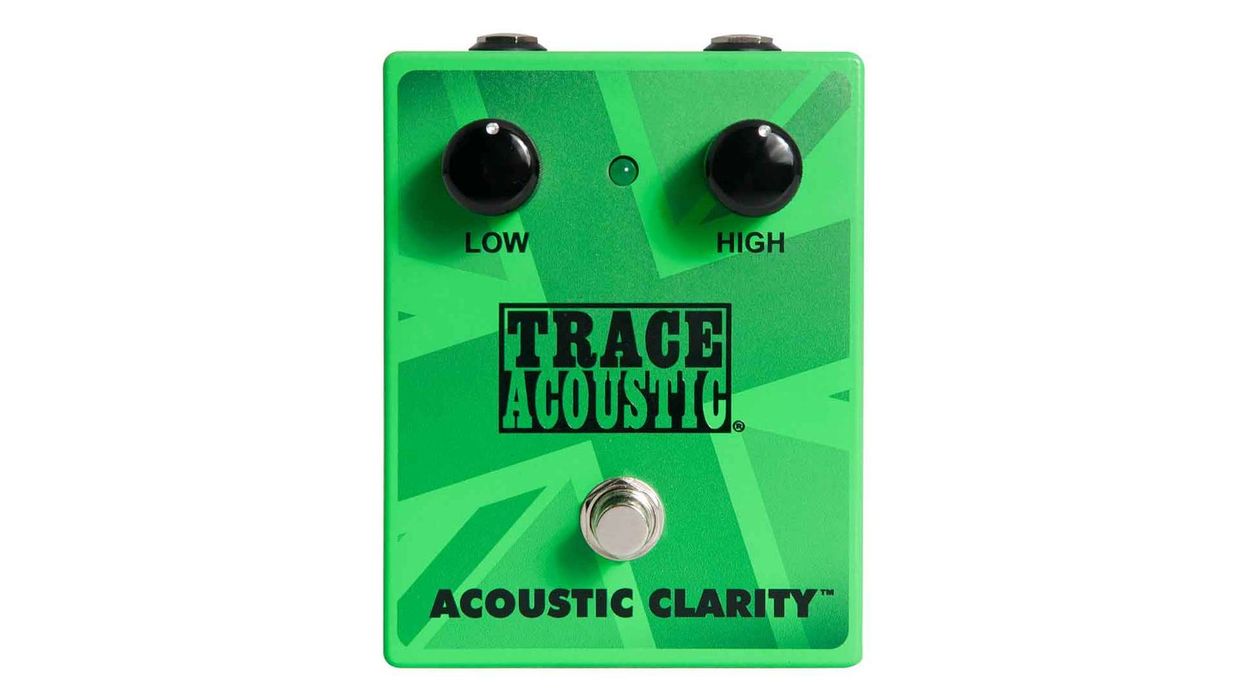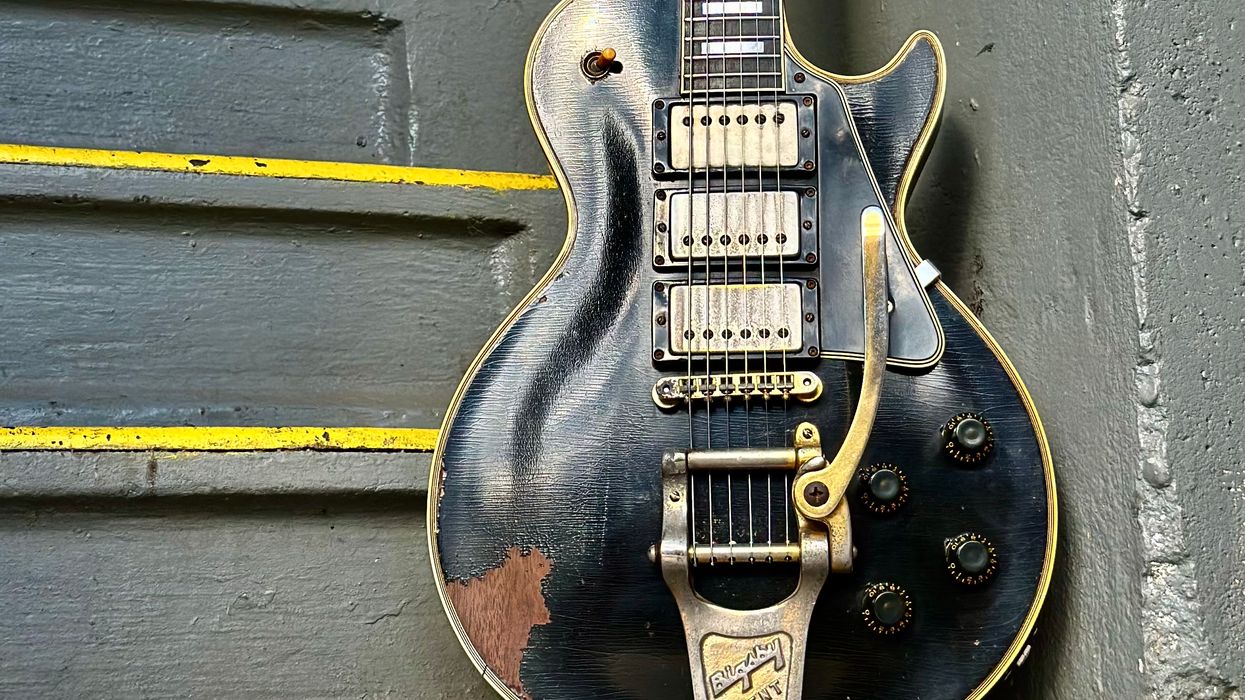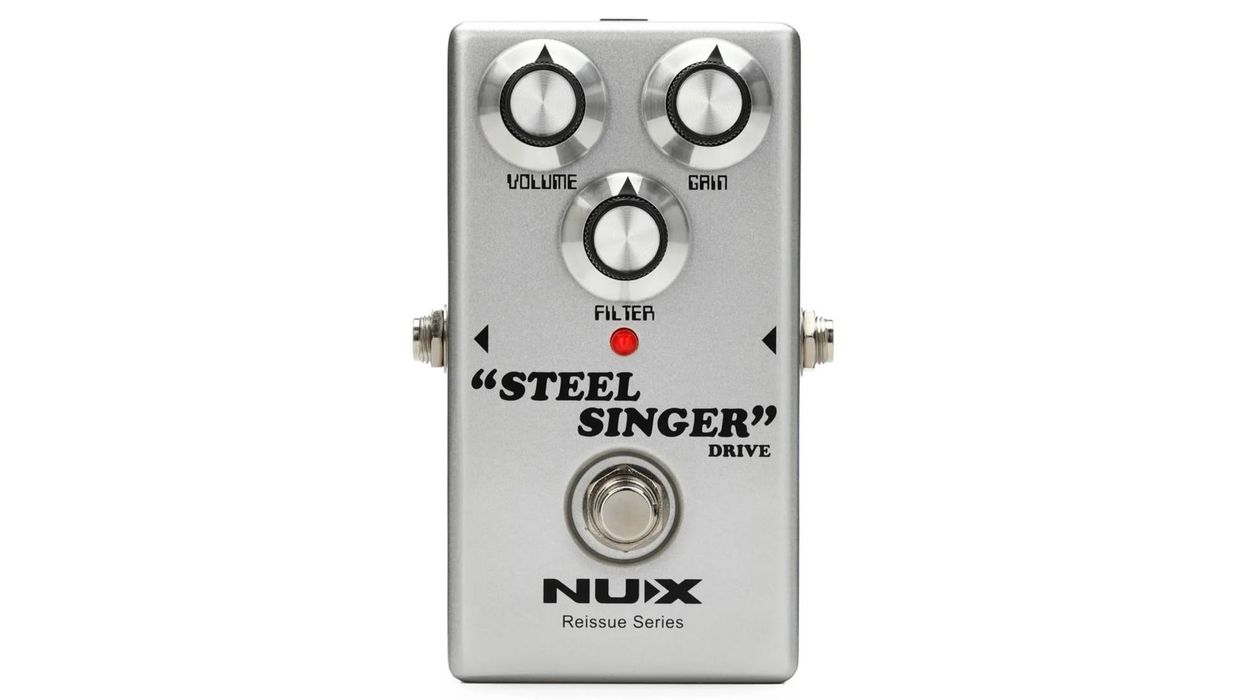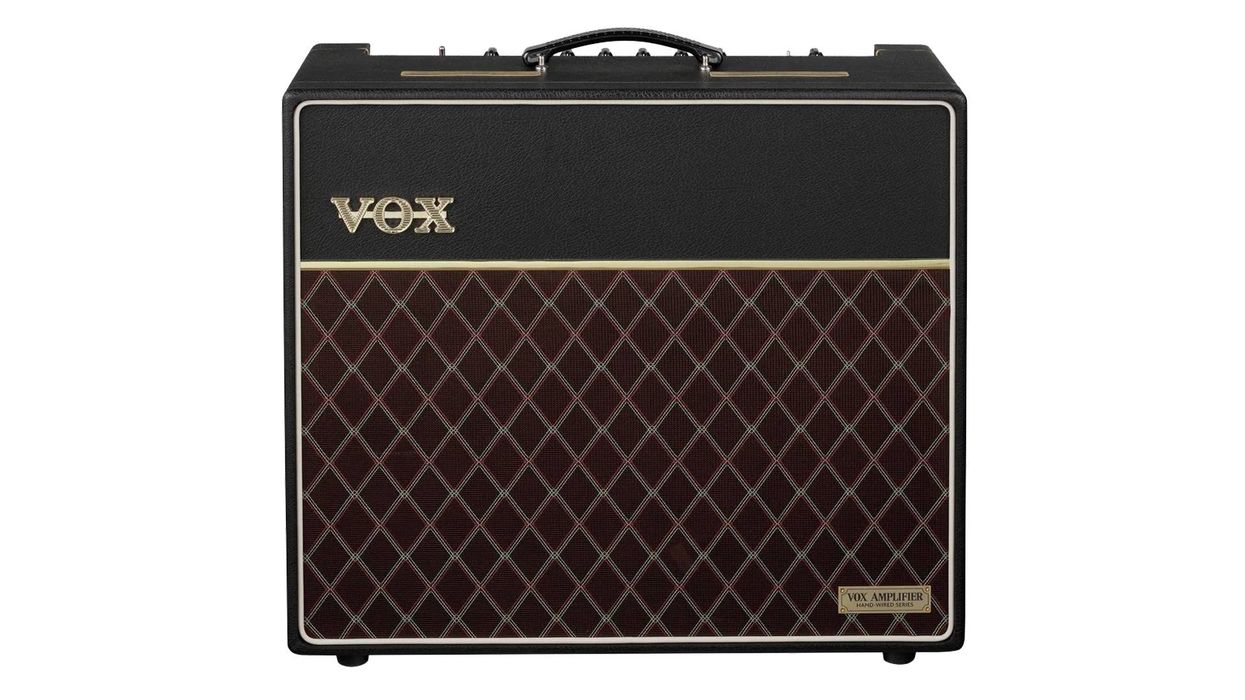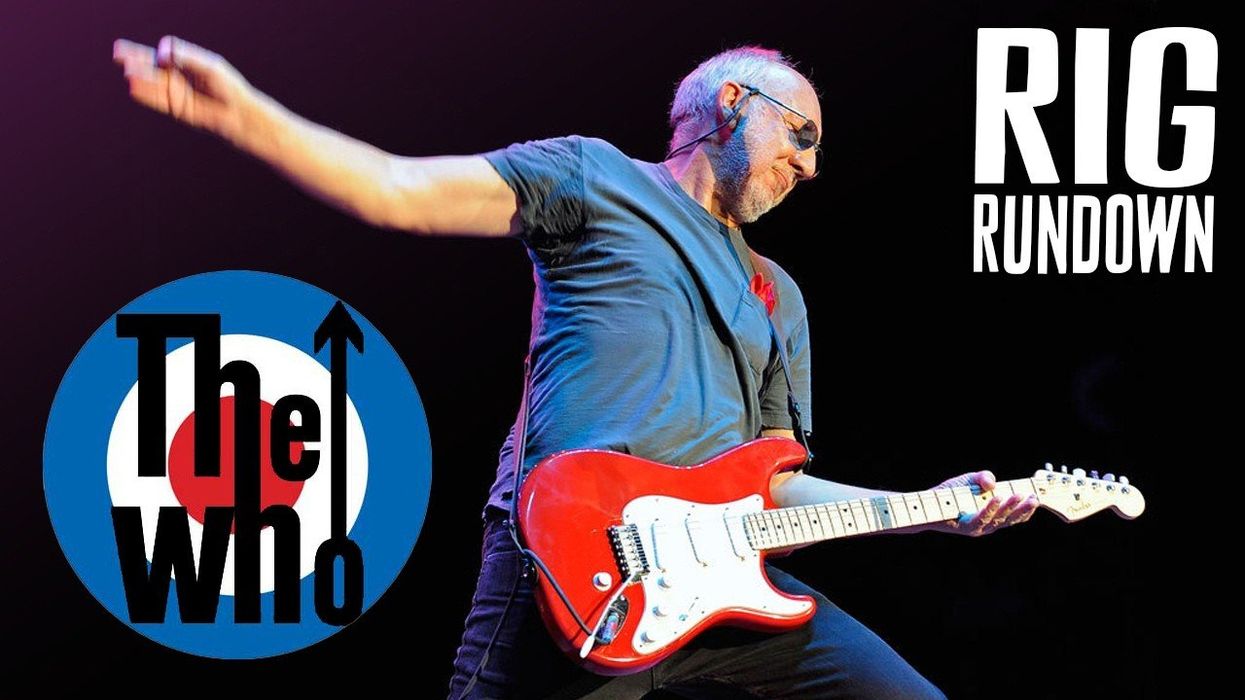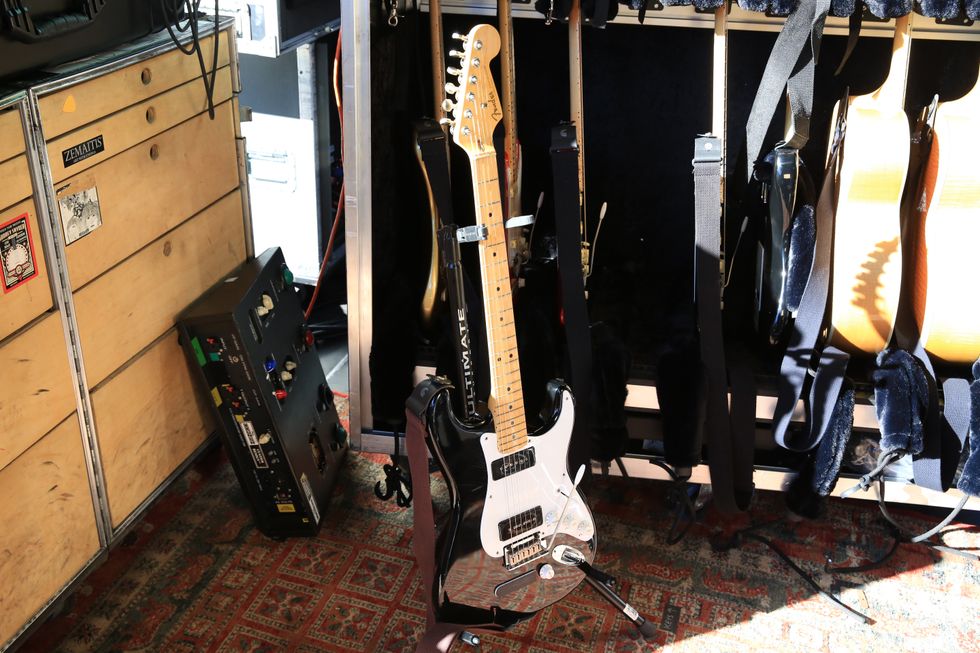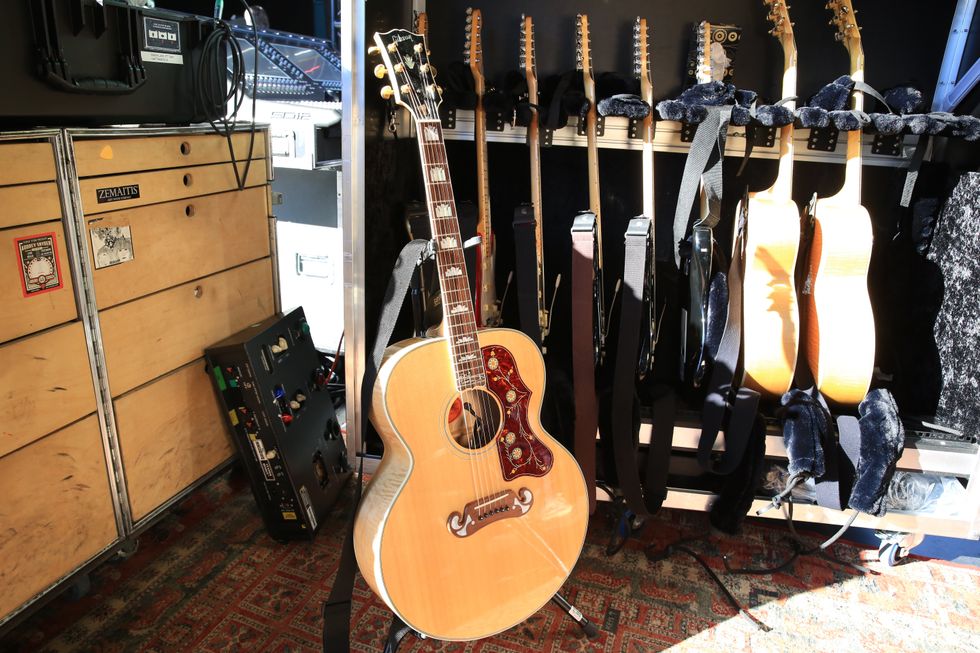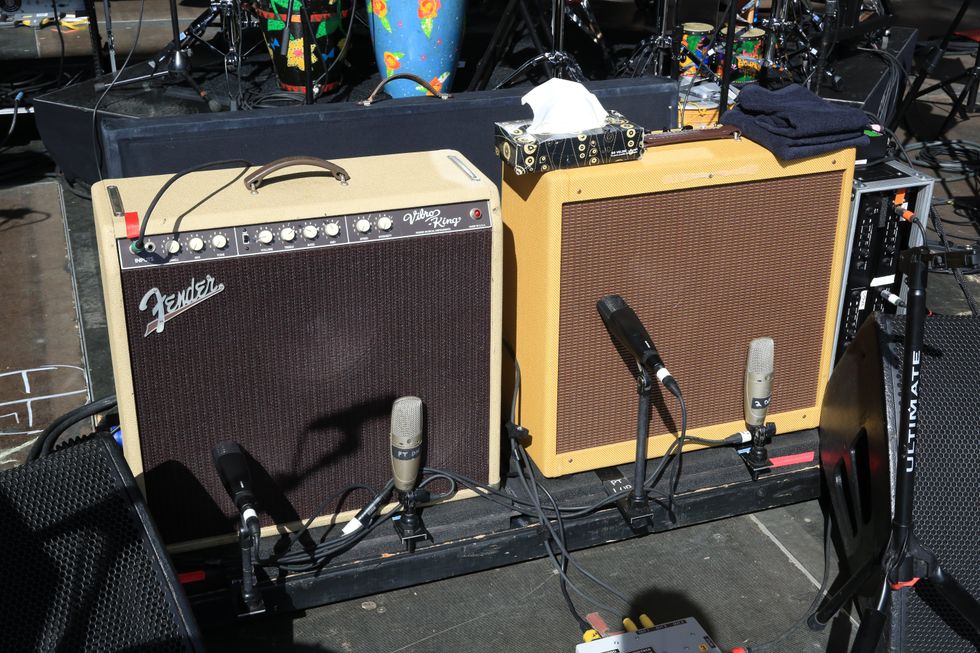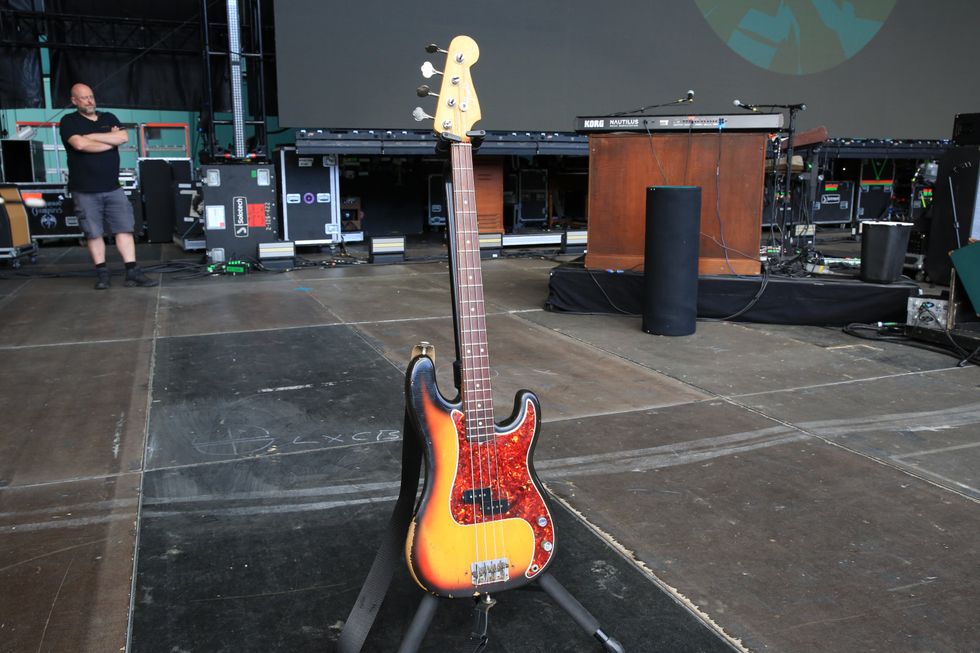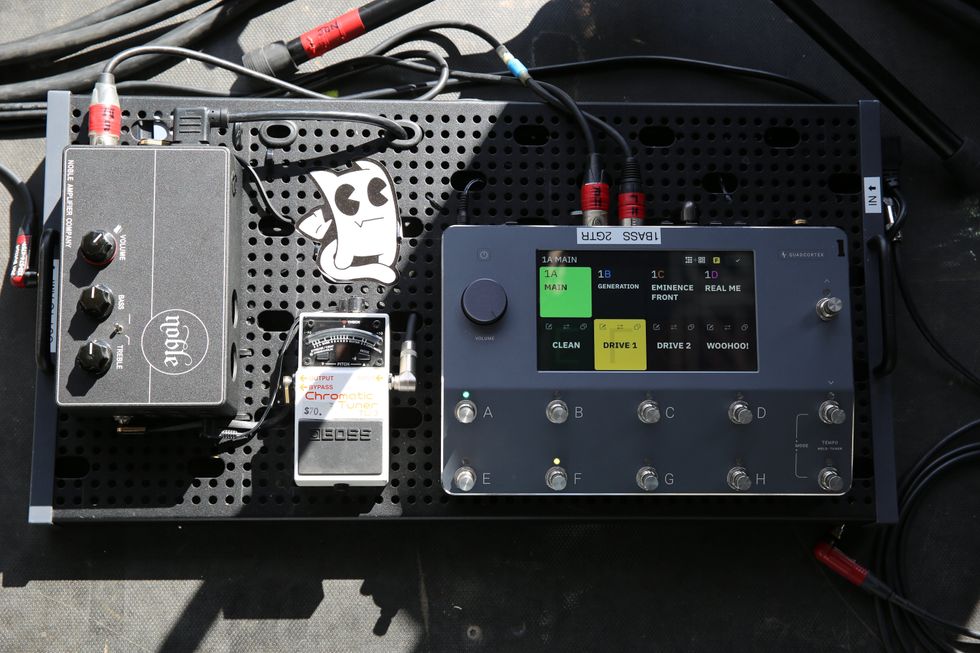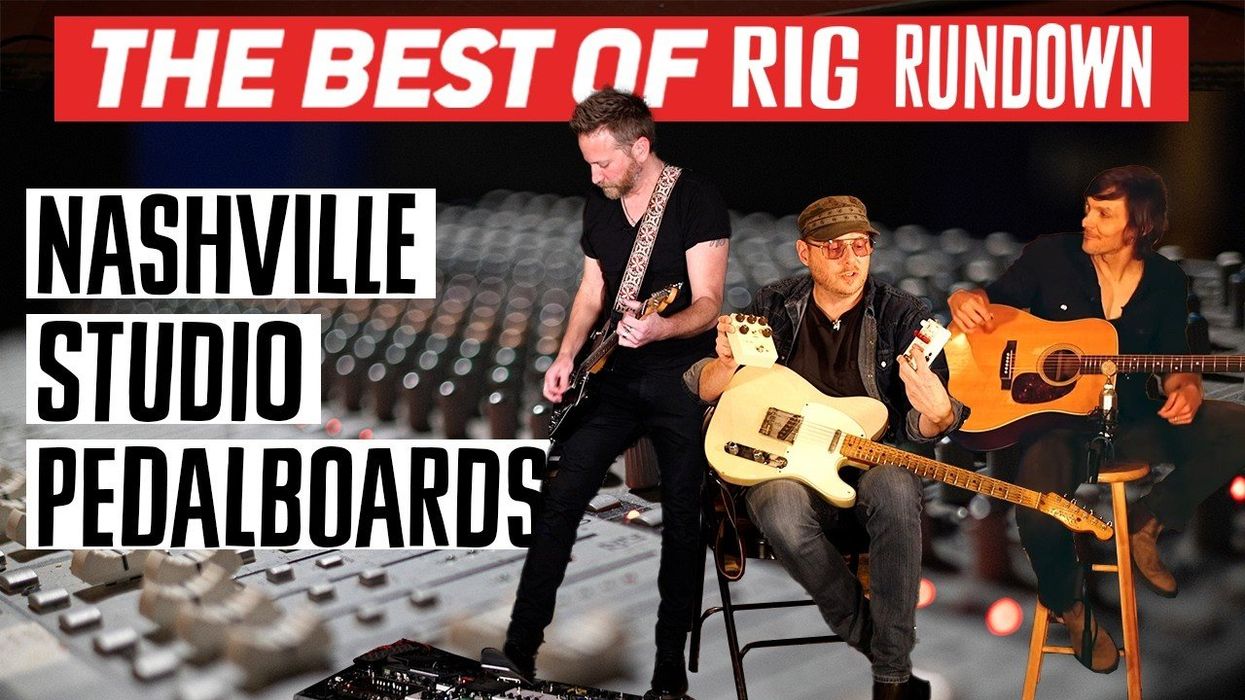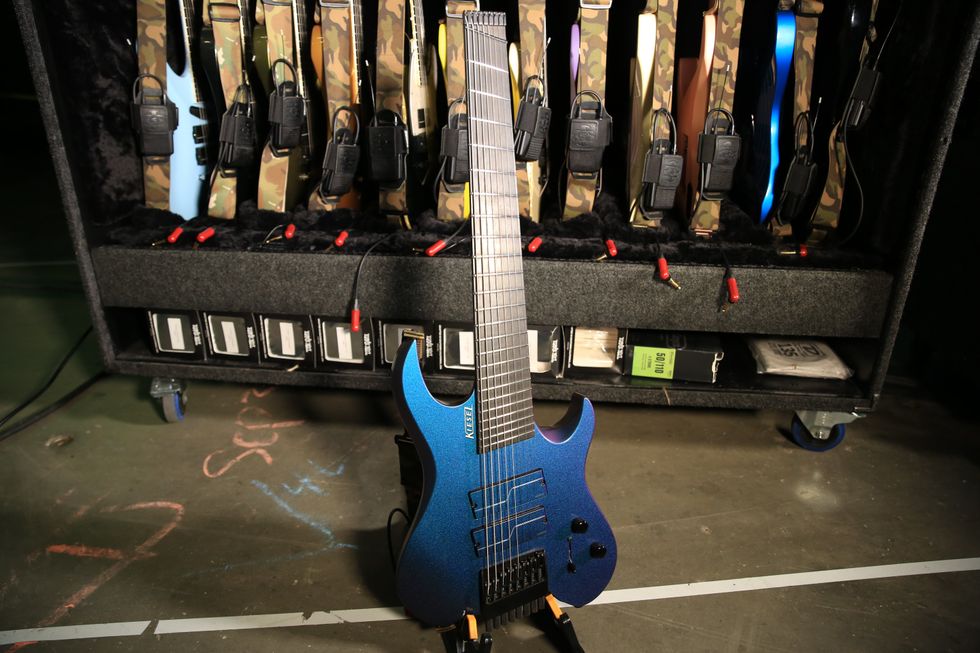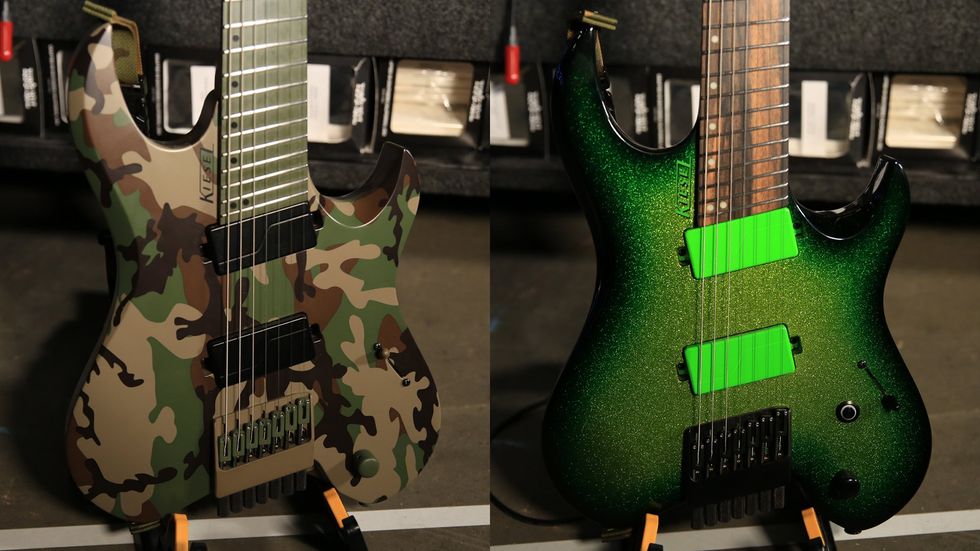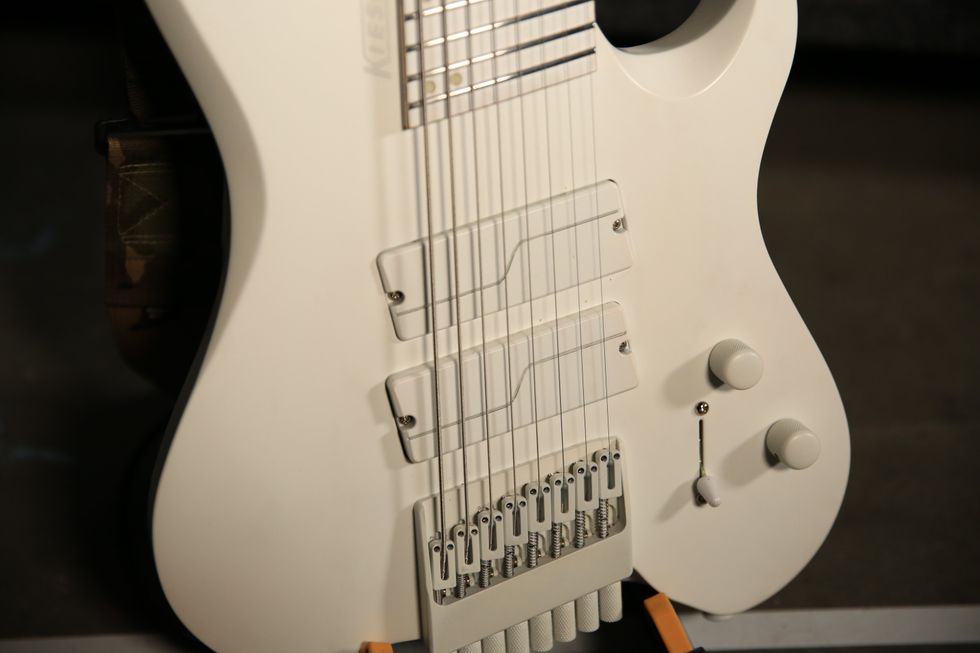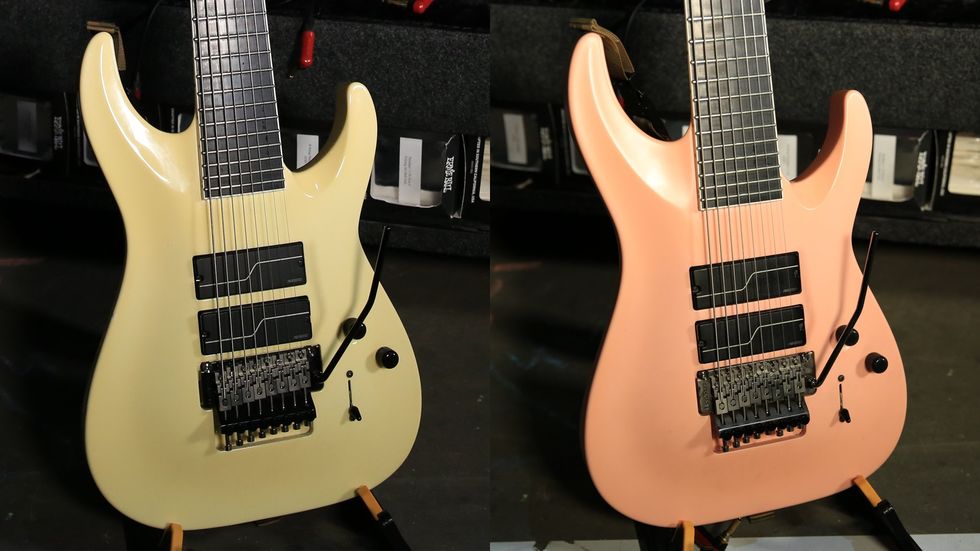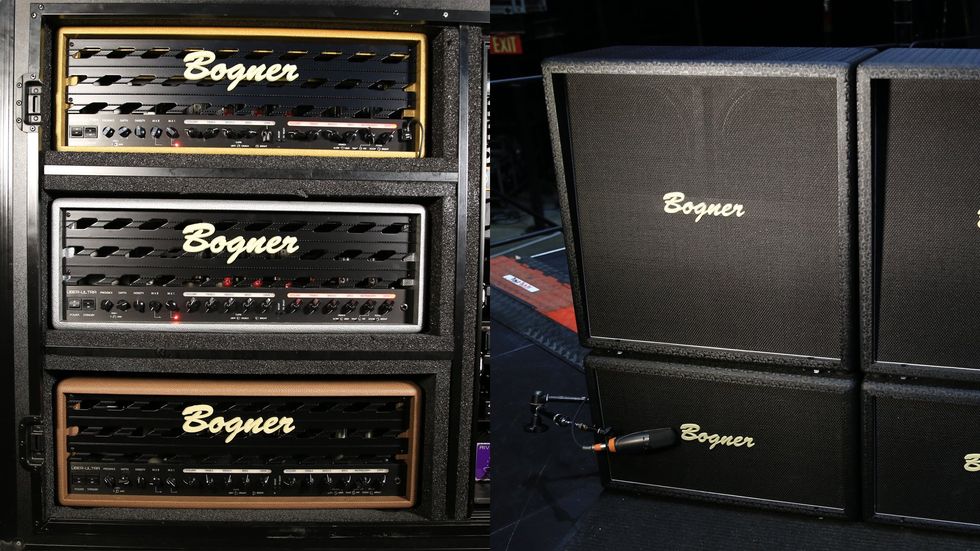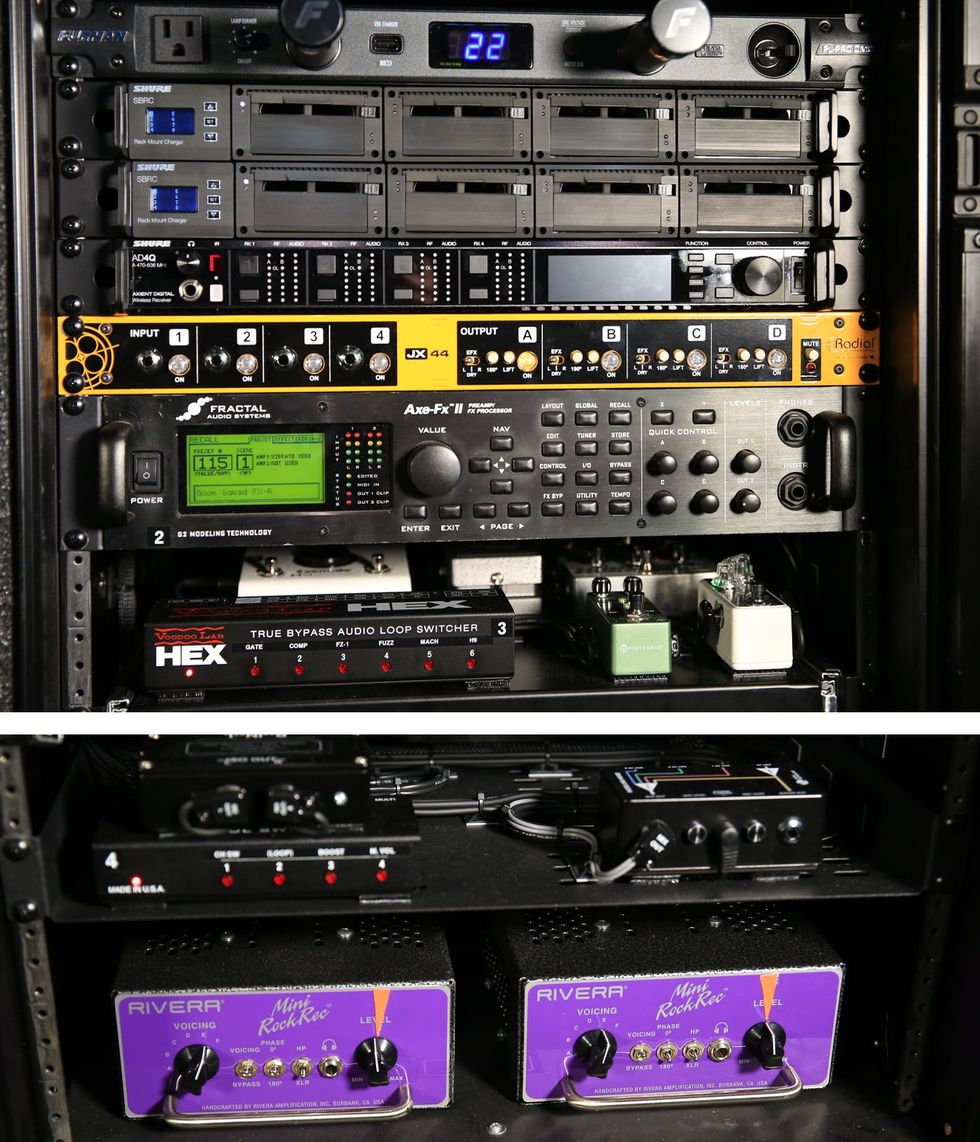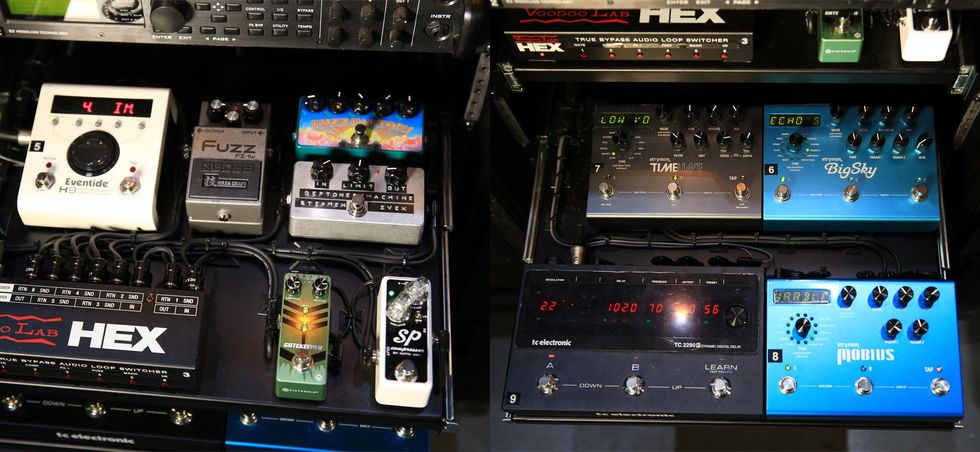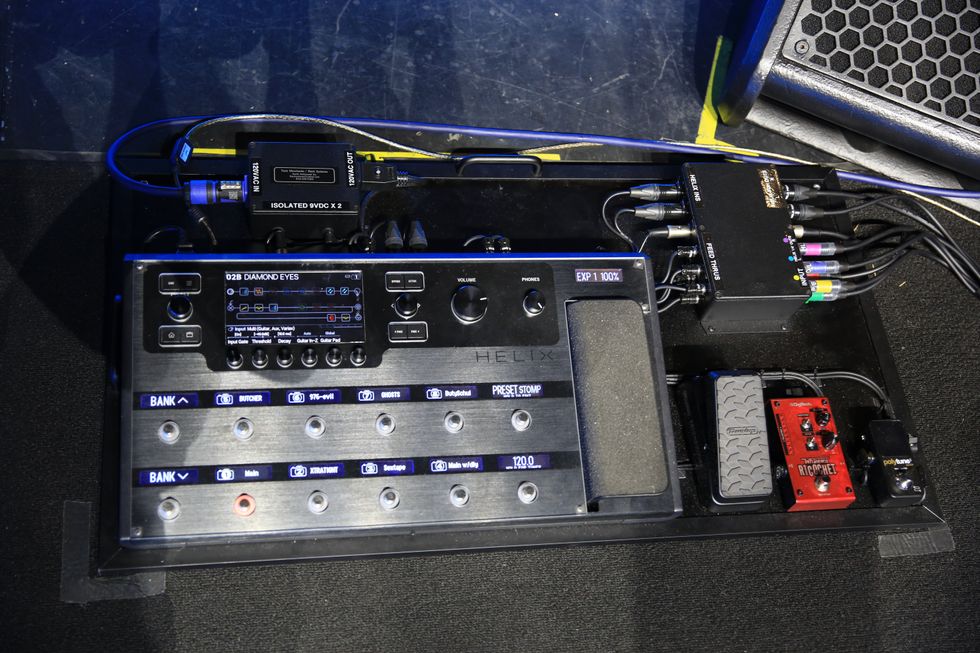Mark Tremonti and Myles Kennedy take PG through their Alter Bridge road rigs.
PG’s John Bohlinger hung with Alter Bridge’s two-man guitar army, Mark Tremonti and Myles Kennedy, before their sold-out show at The Orpheum Theater in Memphis. Tremonti and Kennedy showcased some beautiful signature Paul Reed Smith guitars, as well as a not-yet-released PRS signature amp.
Thanks to techs Dave Pate and Scott Davis for their help with the details.
Brought to you by D’Addario Strings.
Brown Sound
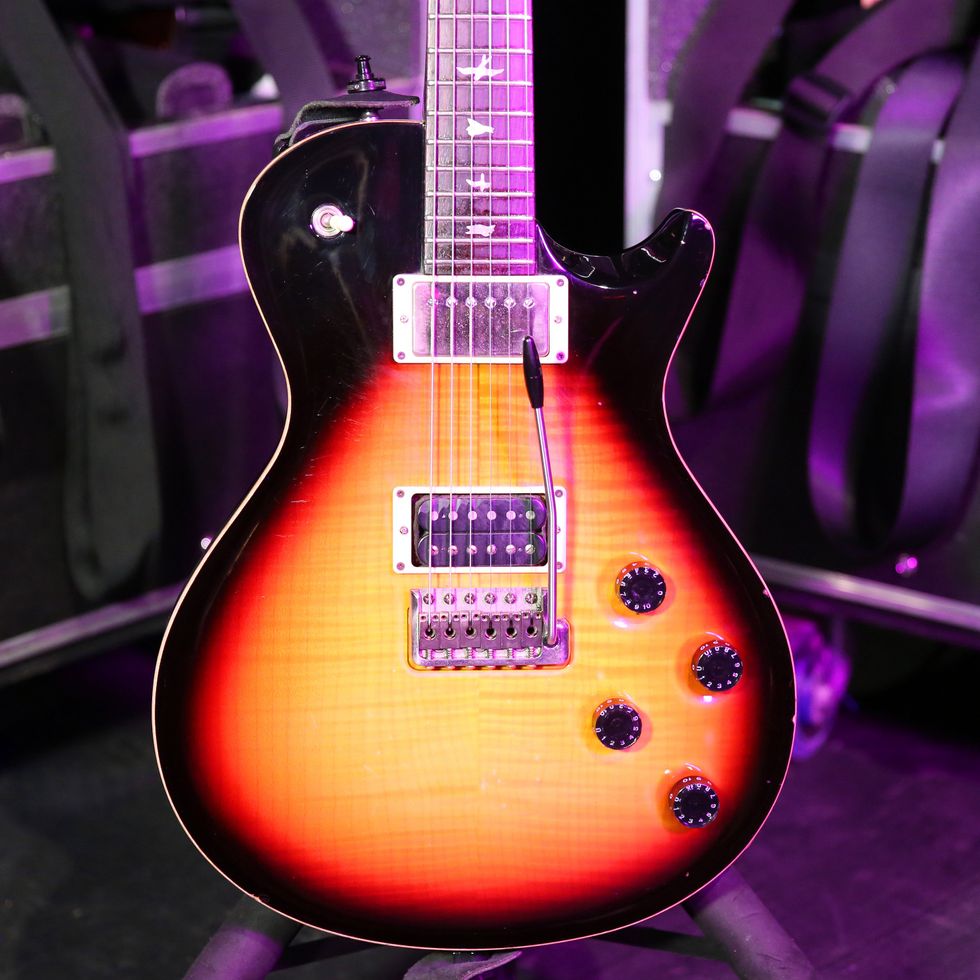
Not surprisingly, Tremonti exclusively plays his Paul Reed Smith Mark Tremonti Signature.
The first is an early model from around 2002, sporting a signature brown burst with a tremolo bar. All guitars have D’Addario strings, though gauges vary by tuning. This one is tuned to Eb with 49–38– 28–17–13–10. Tremonti uses Dunlop Tortex 1.3 mm picks.
Spare Some Change?
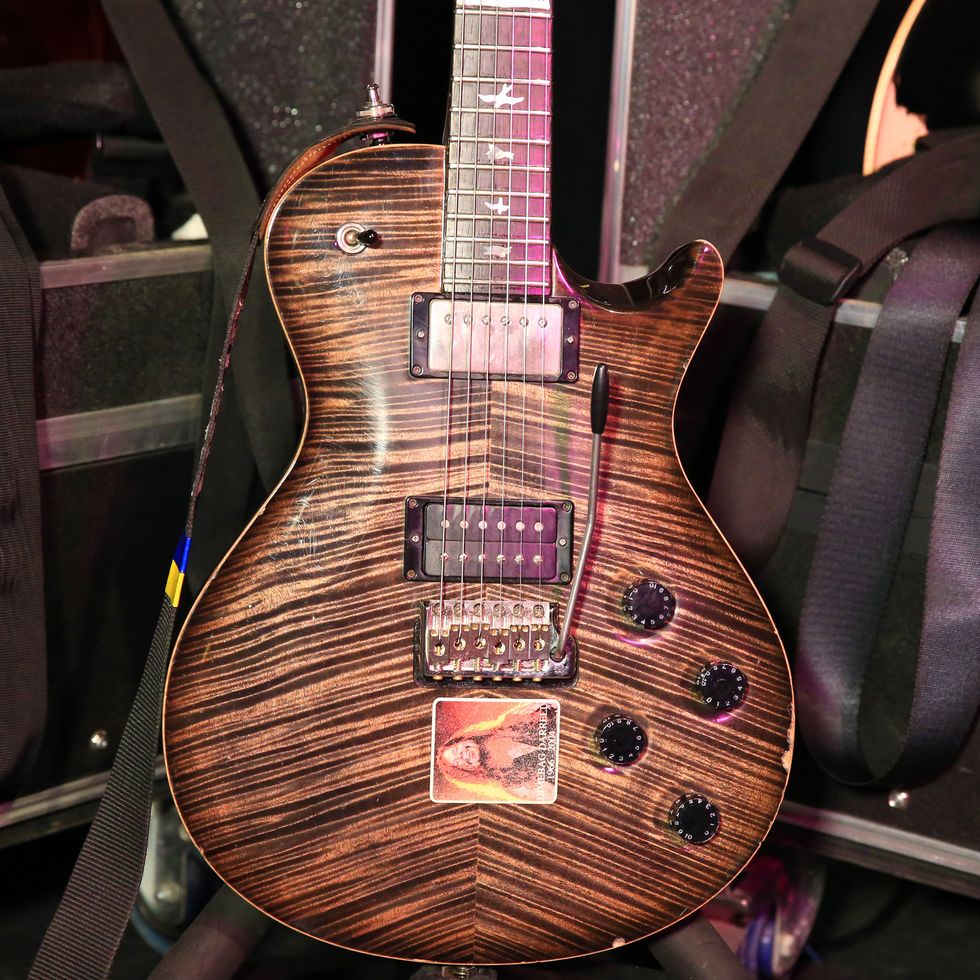
This is Dime—short for Dimebag—Tremonti’s second PRS single-cut with a whammy bar.
Don't Call Me Daughter

This is Stella, named after Tremonti’s two-year old daughter. Tremonti and Paul Reed Smith came up with the body design together. PRS isn’t set up to mass-produce this shape, so there won’t be a wide-scale production.
Bearded Beauty
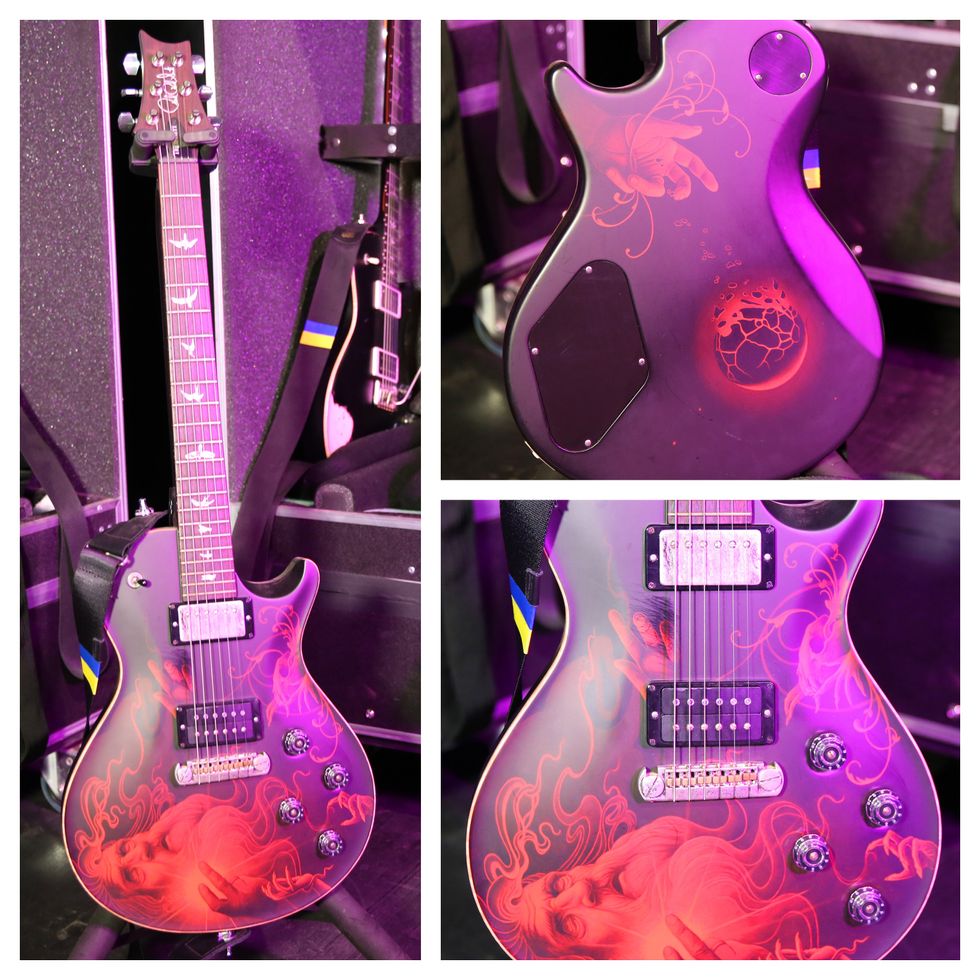
This “Fenton” graphic guitar is one of 20 produced. This was a 20th anniversary model with original art painted by Joe Fenton.
Outlaw Style
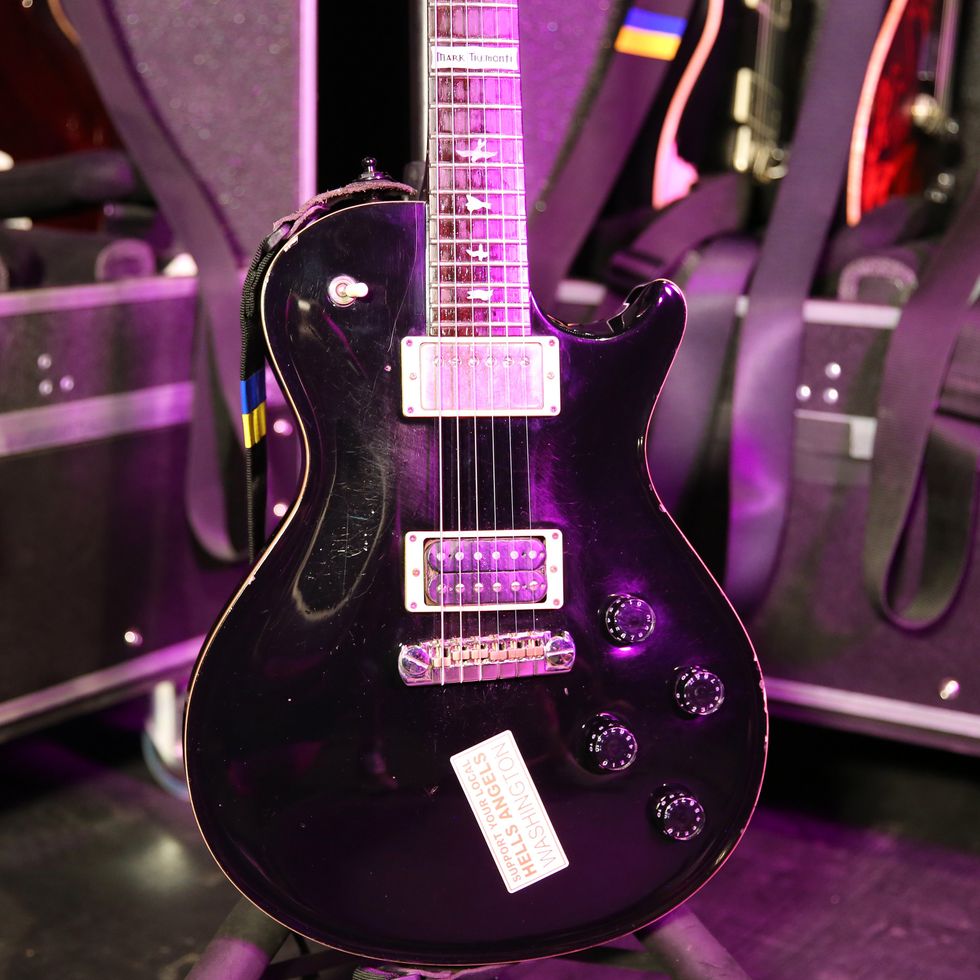
H.A. (Hell’s Angels) was the second prototype Tremonti signature made by PRS. The pickups are early prototypes.
Mark Tremonti's Pedalboard

Tremonti’s signal starts with an Evidence Audio ‘The Reveal’ cable from his guitar to his pedals, and Mogami W2319 and Square Plug SP5 plugs for patch cables. Pedals include a Morley “Mark Tremonti” Signature Wah, Ibanez TS808HW, Boss TU-3, Boss OC-5, Digitech The Drop, MXR Smart Gate, Mark Tremonti prototype signature chorus/vibrato, and a Lehle Little Lehle III true bypass loop pedal. There’s also a G-Lab SD-1 running into the amp’s effects loop.
The Big Reveal

The PRS MT 100 Mark Tremonti Signature 100-watt three-channel head has not been officially released yet, but Tremonti has been touring with it for a while, as a shake-down cruise.
Crushin' Cabs
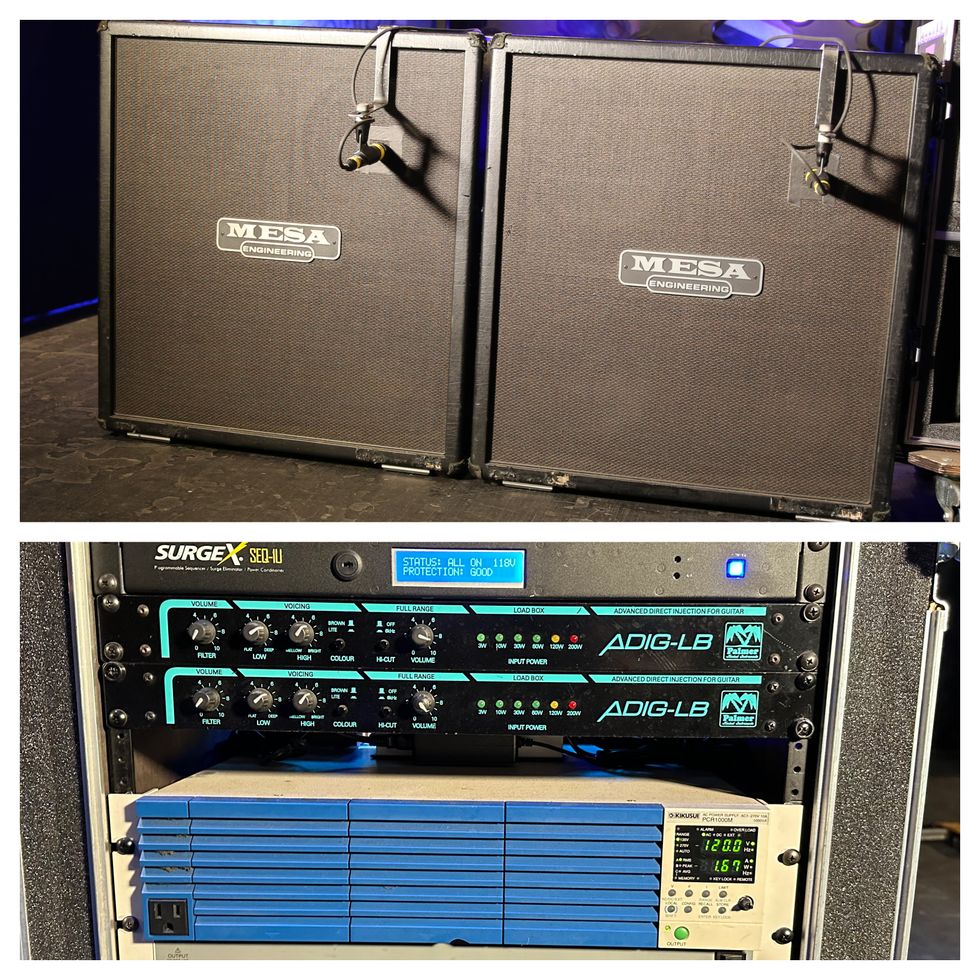
He runs this tube-driven beast into two oversized Mesa 4x12 cabs, loaded with Celestion British V30s wired at 8 ohms. The amp uses a Kikusui PCR1000M voltage regulator/power conditioner, plus there’s a Lehle P-Split for splitting signals to main and backup heads.
The Four Horsemen
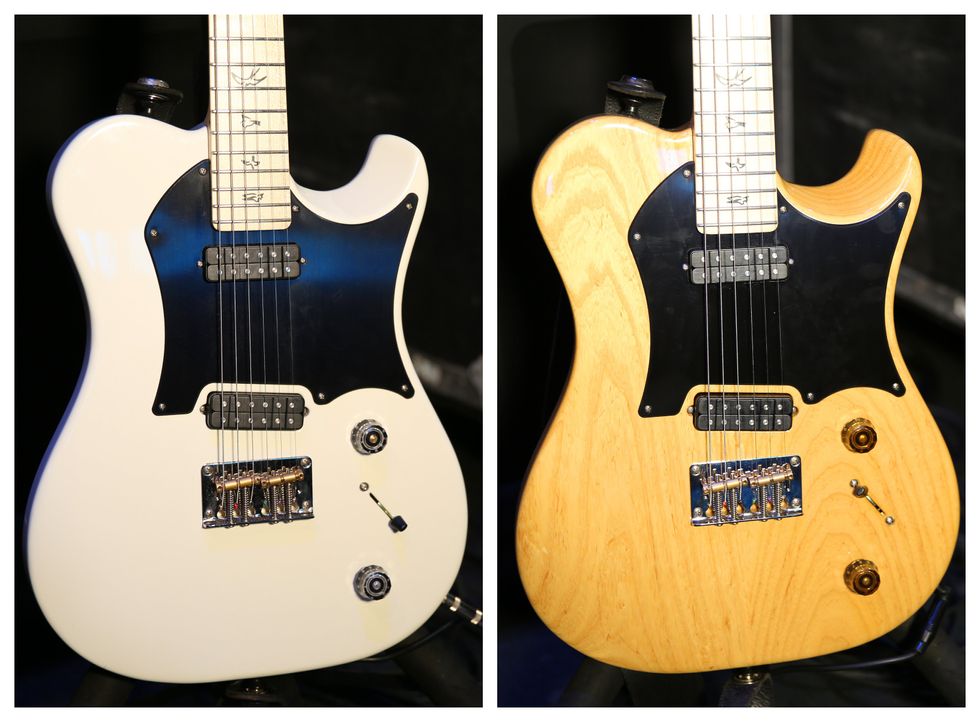
Kennedy tours with four of his new PRS Signature guitars. The ones finished in natural and white are both tuned to Eb or Eb with a dropped C#, depending on the song. The signature is a bolt neck, T-style guitar with 10” radius, and Narrowfield pickups. All guitars are strung with D’Addario Light Top/Heavy Bottom Strings (.010-.052).
Dr. Hoo
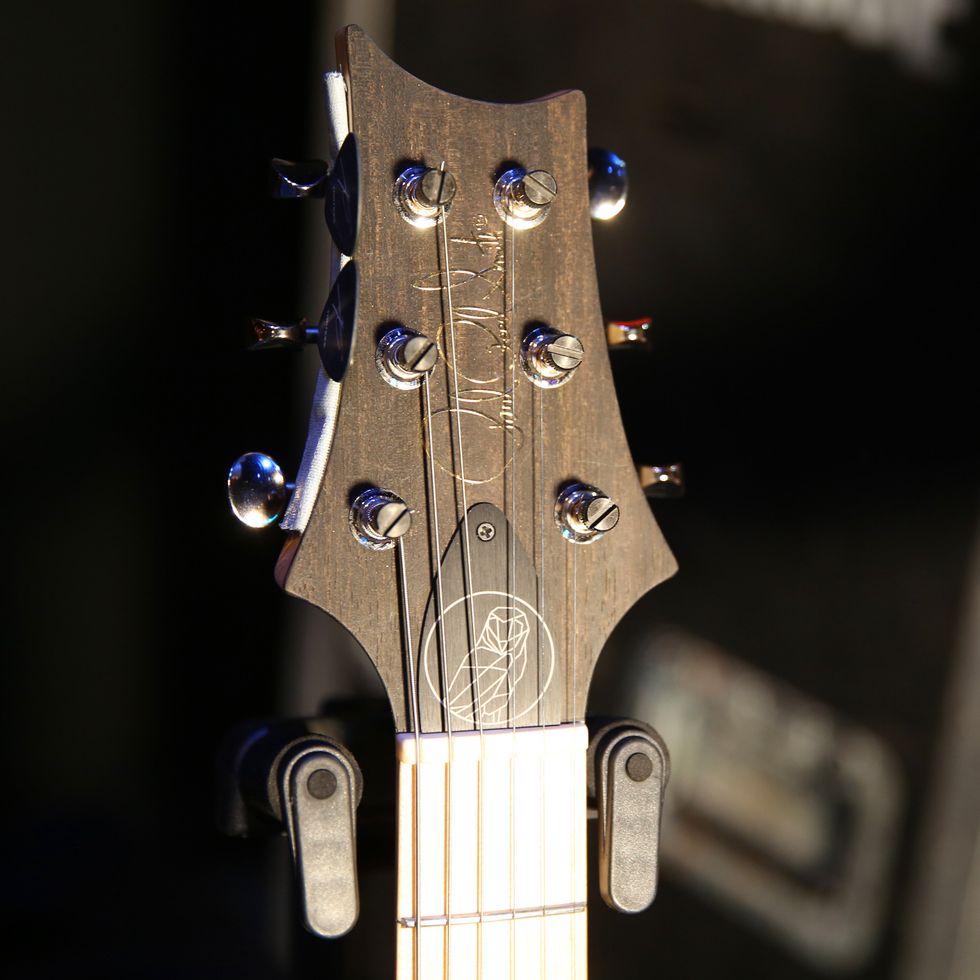
Kennedy reveres owls for their wisdom and adaptability. PRS has a long-standing tradition of using bird silhouettes for inlay markers, so it only made sense that Kennedy and PRS would incorporate their collective avis admiration in the signature model.
Green Machine
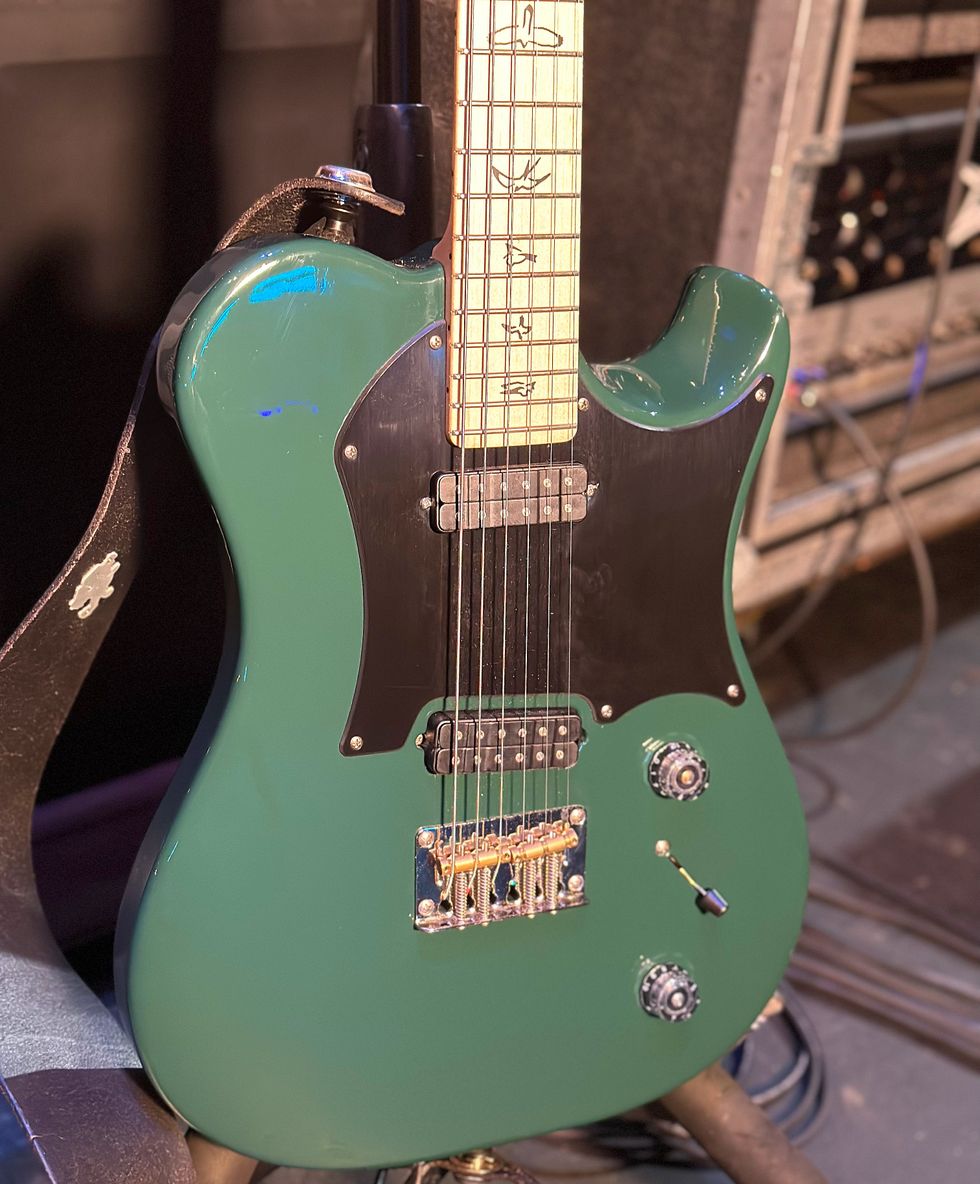
Kennedy’s green Signature is tuned to A#–G#–C#–F#–A–#D#, and G–#G–#C#–F#–A#–D#, depending on the song.
Back(up) In Black
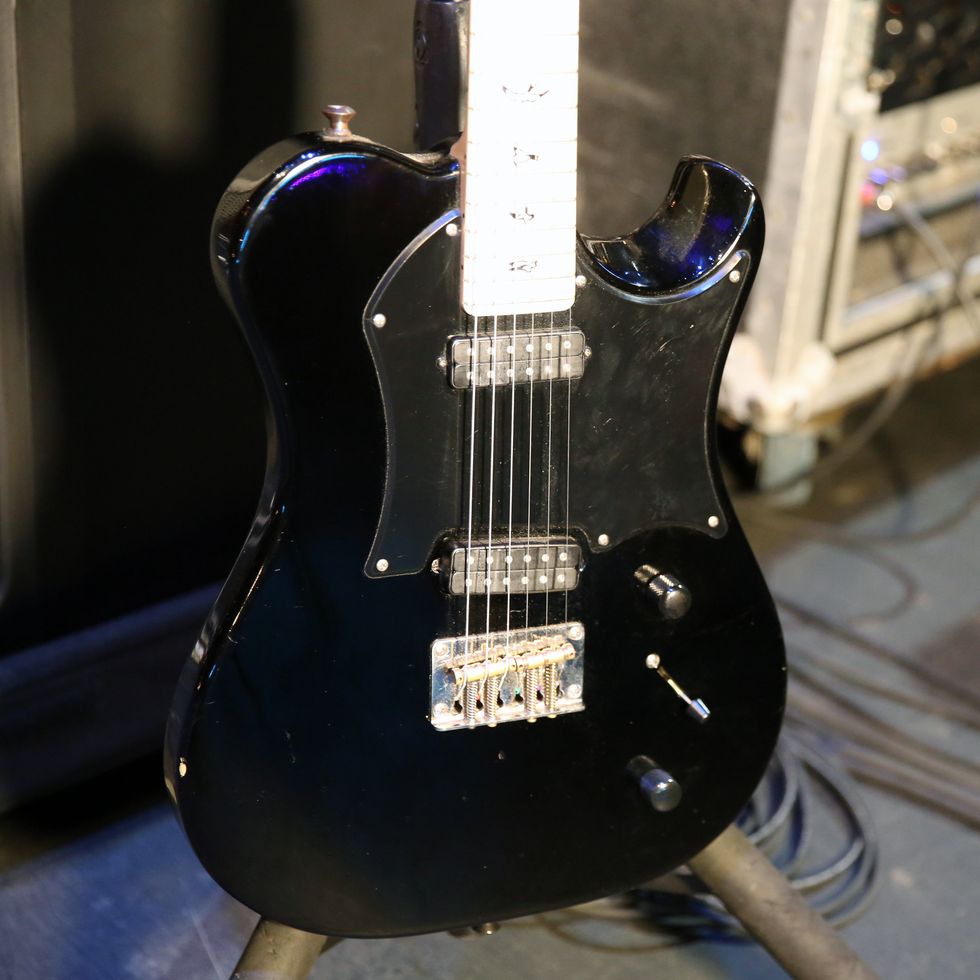
Kennedy’s black Signature is strictly a backup in case there are problems with any of the others.
Diezel Power

Kennedy runs two Diezel heads: a Diezel VH4 and a Diezel Herbert. The amps run into two Diezel 4x12 cabs loaded with green Tone Tubby Hempcone 40/40 Ceramic speakers.
Myles Kennedy's Pedalboard

Kennedy runs his MXR Carbon Copy and an EarthQuaker Devices Dispatch Master in the VH4’s clean loop. Over on his pedalboard, there’s a Dunlop MC404 CAE Wah, Boss TU-2 tuner, Electro-Harmonix’s Nano POG, Lizard Queen, and Freeze, a Ceriatone Centura, Strymon Deco, Line 6 MM4, and a Boss RV-6.
Shop Alter Bridge's Rig

PRS Mark Tremonti Signature
PRS SE Mark Tremonti Signature
Taylor 514CE Acoustic-Electric Guitar
Lehle Little Lehle
DigiTech Drop
MXR Smart Gate
Ibanez TS808HW Tube Screamer
Boss TU-3 Chromatic Tuner
Radial Big Shot ABY
Electro-Harmonix Freeze
Strymon Deco
EHX Micro POG
EHX Lizard Queen
PRS Myles Kennedy Hunter Green Signature
PRS Myles Kennedy Natural Signature
PRS Myles Kennedy Tri-Color Sunburst Signature
![Rig Rundown: Alter Bridge [2023]](https://www.premierguitar.com/media-library/rig-rundown-alter-bridge-s-mark-tremonti-myles-kennedy-2023.jpg?id=45529149&width=1200&height=675)

![Rig Rundown: AFI [2025]](https://www.premierguitar.com/media-library/youtube.jpg?id=62064741&width=1245&height=700&quality=70&coordinates=0%2C0%2C0%2C0)

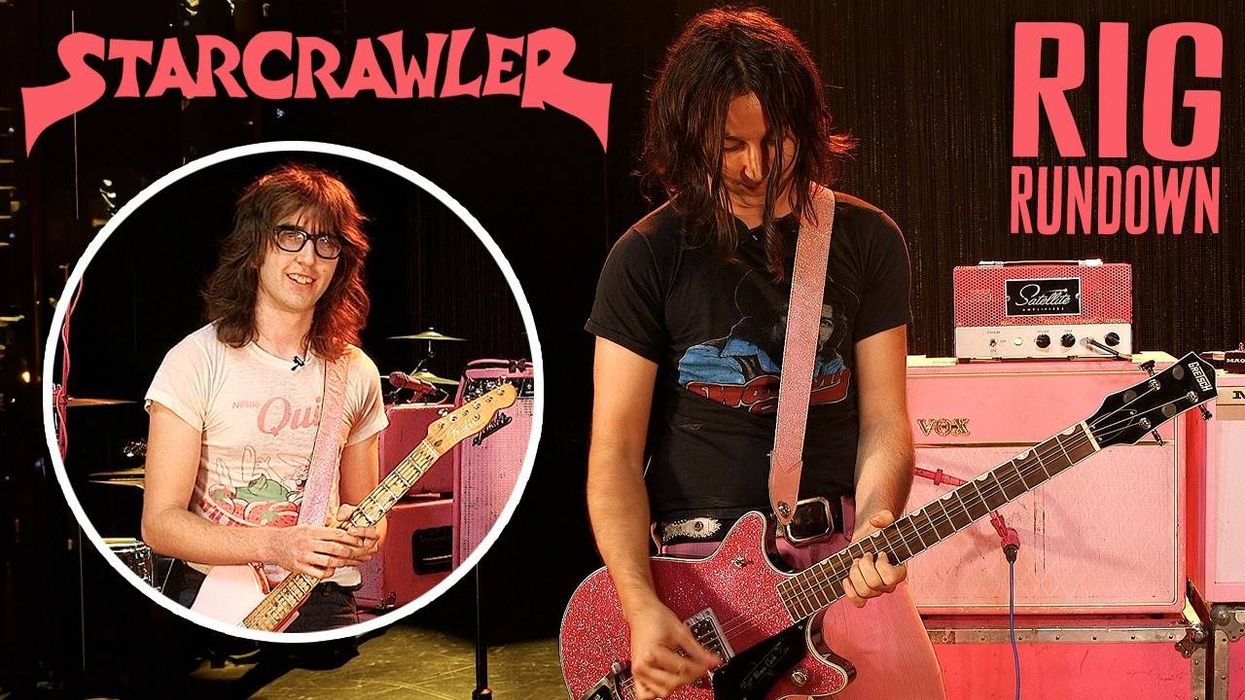
![Devon Eisenbarger [Katy Perry] Rig Rundown](https://www.premierguitar.com/media-library/youtube.jpg?id=61774583&width=1245&height=700&quality=70&coordinates=0%2C0%2C0%2C0)
